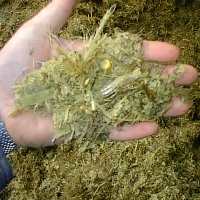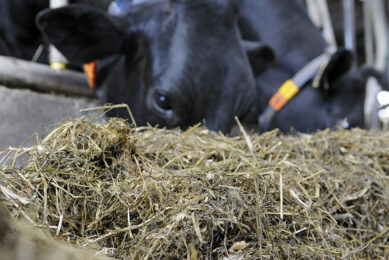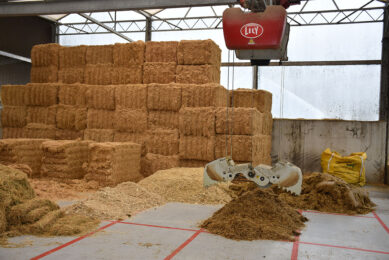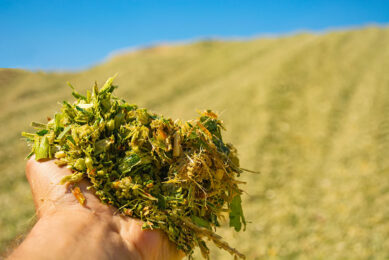Study on fatty acid composition in silage

Researchers from the Swedish University of Agricultural Sciences studied the effects of conservation method on fatty acid composition of silage. The results have been published in Animal Feed Science and Technology.
The experiment was conducted to investigate effects of wilting and additives
on the fatty acid (FA) composition of grass silage. The crop used was timothy
(Phelum pratense L., cv. Grindstad), and the additives were Proens™
(formic acid and propionic acid, 60–66 g/100 g and
25–30 g/100 g, respectively), the bacterial inoculant Siloferm® Plus
(Pediococcus acidilactici and Lactobacillus plantarum) and water
(control).
No major effect
The wilted material
reached a dry matter (DM) content of 336 g/kg at the first cut and
350 g/kg at the second cut. Neither wilting nor the additives had any major
effect on the FA proportions, with the only differences in the concentrations of
C16:0 and C18:3. Silage treated with bacterial inoculant contained a higher
proportion of C16:0 (P<0.05) than silage treated with acid, and a lower
(P<0.05) concentration of C18:3 than silage treated with either of the other
two additives.
In the silages, there were lower (P<0.05) proportions
of C16:0, C18:0, C18:1 and C18:3, and higher (P<0.05) proportions of C16:1,
C18:2 and other identified FAs, than in the fresh material. A wilting process
shorter than 24 h, to a DM content of 330–350 g/kg, did not have any
effect on the proportions of FAs in P. pratense L., cv. Grindstad.
Since the different additives and wilting strategies tested in this
study did not affect the proportions of FAs in silage to a major extent, the
results indicate that such a process offers a robust means to avoid losses of
FAs that can occur during wilting, while retaining the positive effects of
wilting, such as reduced losses of nutrients through
effluents.
Related website:
University of Agricultural
Sciences Sweden











